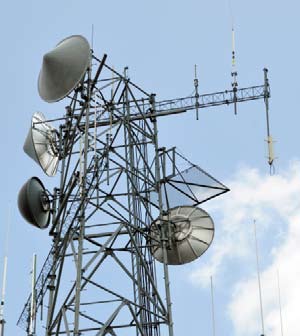The Air Force Research Laboratory, Sensors Directorate, Advanced Radar Waveforms & Processing Branch recently installed a remote testing facility to gather data for radio frequency (RF) tomography technology. Because the quantity of collected data would increase exponentially once the testing site was operational, the military analysts turned to Ohio Supercomputer Center experts for assistance in adapting existing RF analysis programs to the military’s high performance computing systems.
The AFRL research team already used Star-P, a commercial software platform, to seamlessly convert to parallel the programming codes written in MATLAB, a different commercial software program. However, the team members had used only Star-P on their in-laboratory Altix computer. By studying results with different sizes of problems on increasing numbers of processors, OSC staff evaluated the potential effectiveness of using Star-P for the tomography code on much larger military supercomputers.
“OSC provided valuable information about how to use Star-P to shorten time between field experiments, direction regarding the structure for existing parallel programs, and ways to shorten the time to develop a deployable system,” said Kevin Magde, AFRL Sensors Directorate, Advanced Radar Waveforms & Processing Branch. “While the RF tomography effort is in relatively early stages, its eventual capability will have tremendous impacts on Department of Defense surveillance operations worldwide.”
--
Project lead: Bracy Elton, Ph.D., OSC
Research title: Usability & scalability of a Star-P/MATLAB application for ultra narrow band tomography on HPC system
Funding source: Department of Defense High Performance Computing Modernization Program
